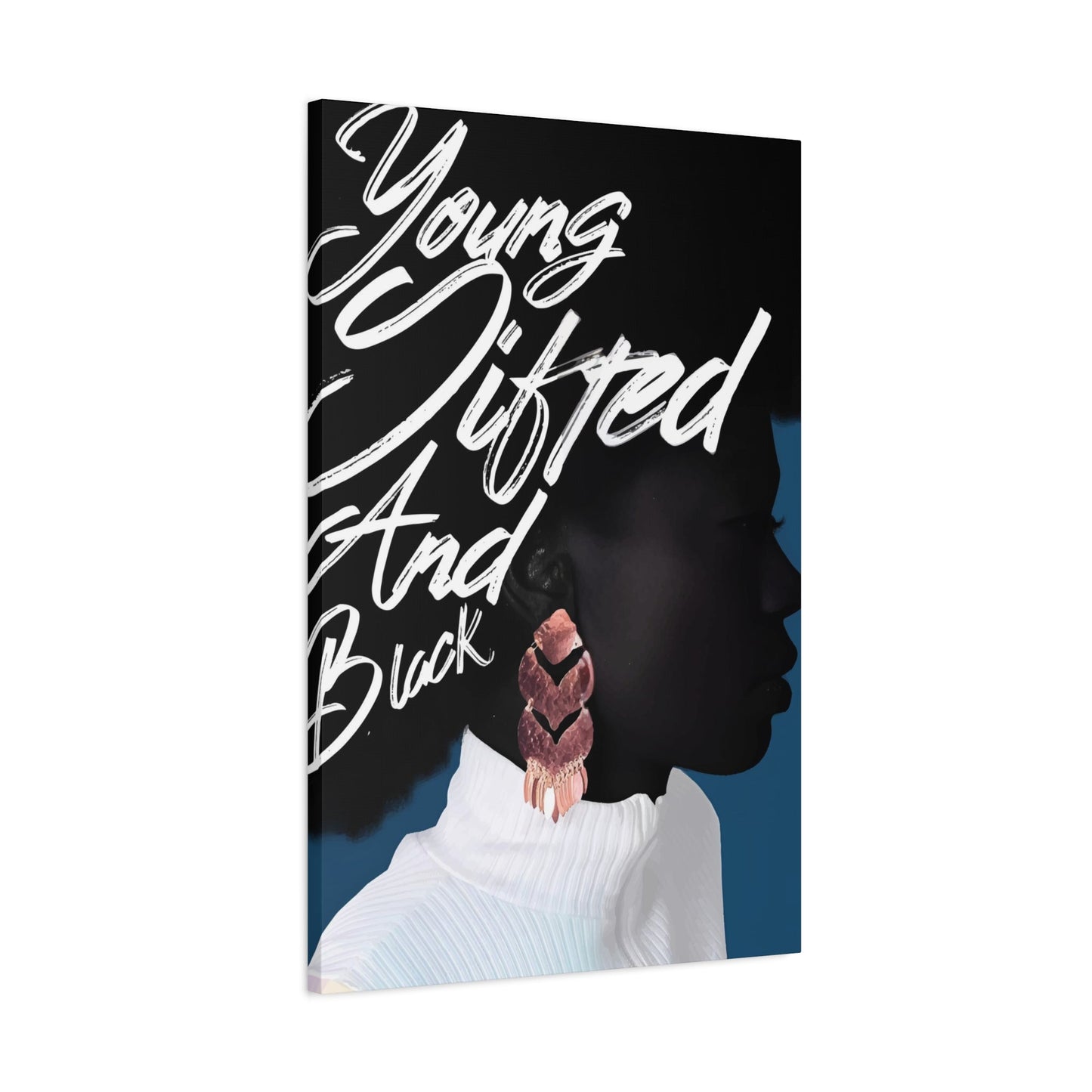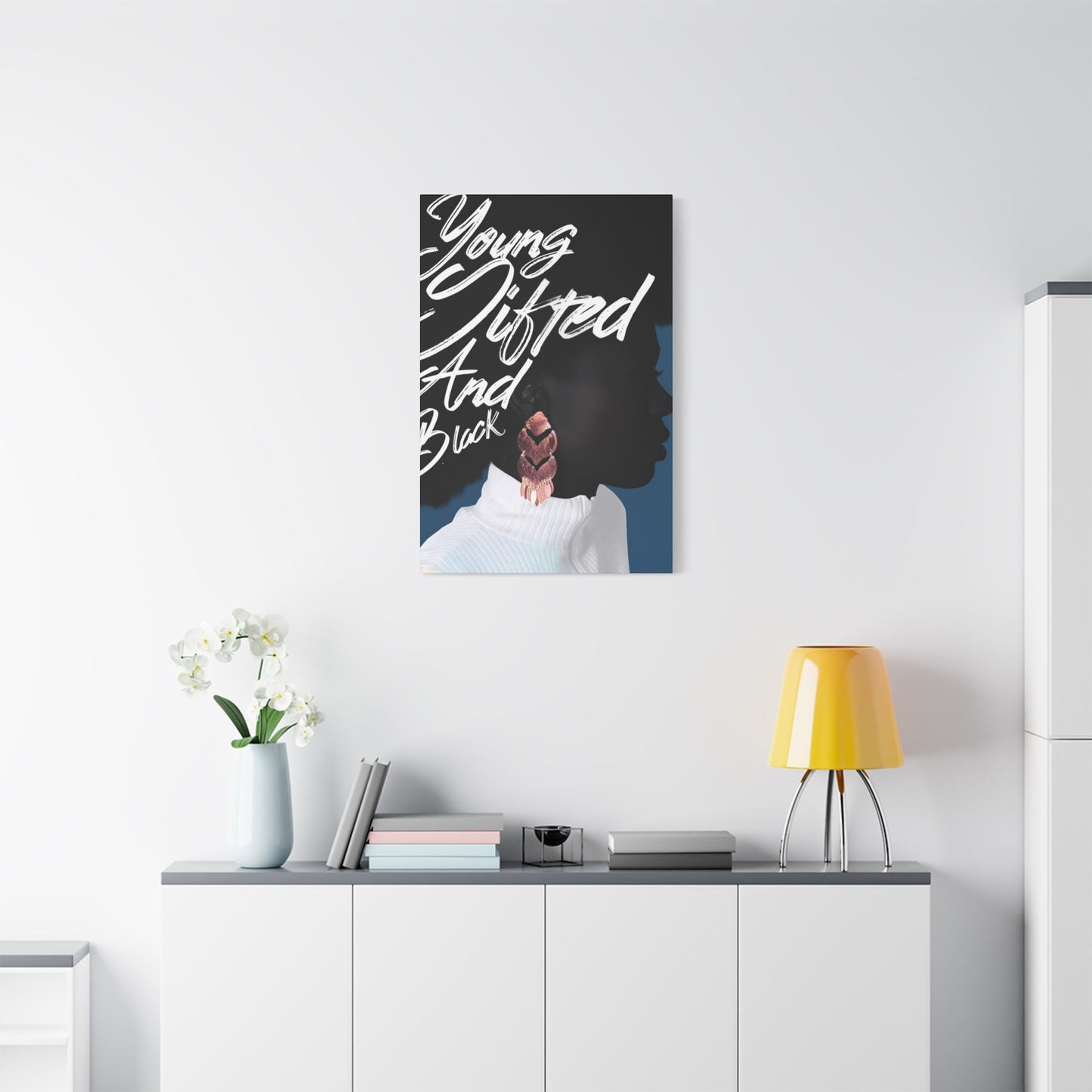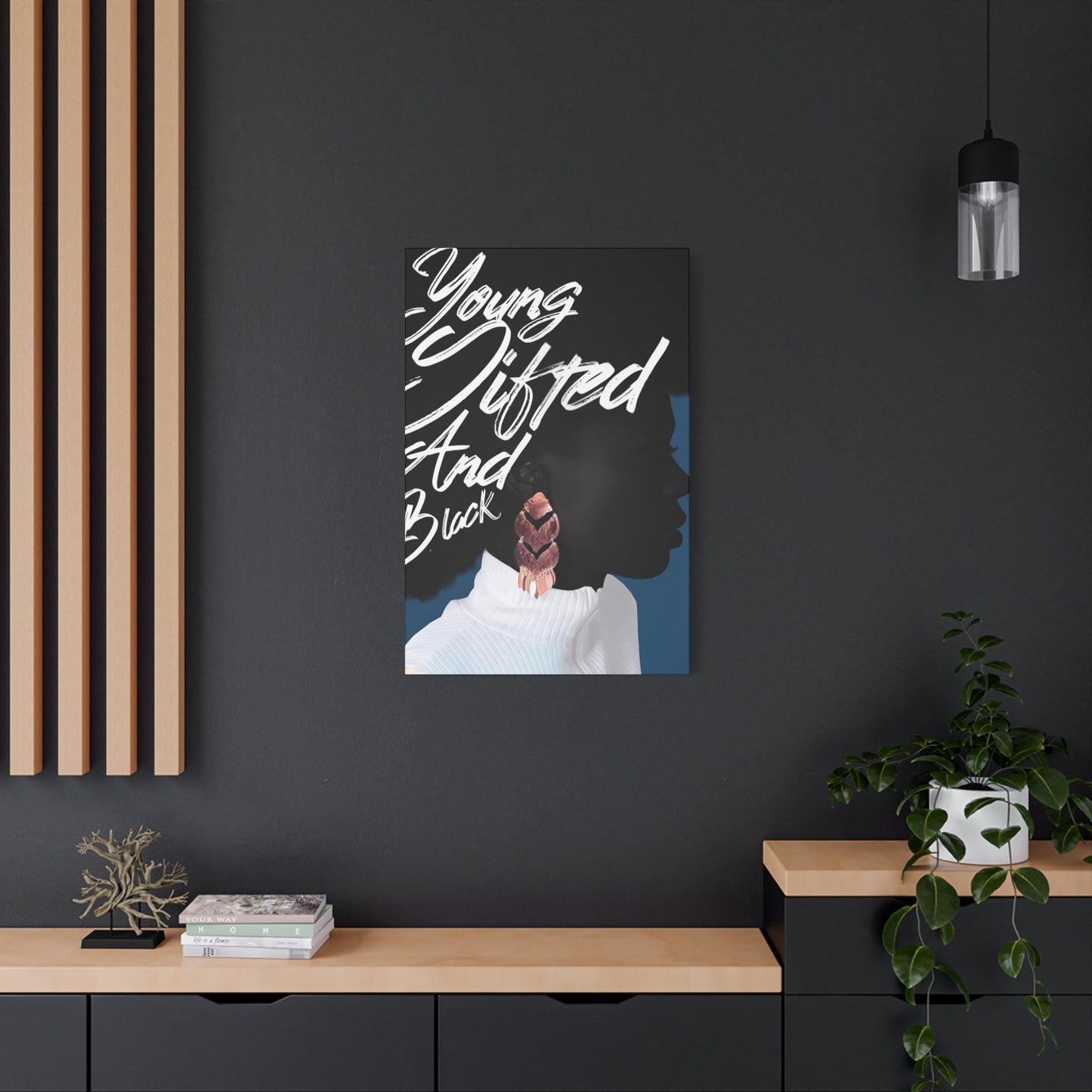Discover the Power of Numa Wall Art:A New Wave in Contemporary Art
The artistic landscape has witnessed numerous revolutionary movements throughout history, each bringing its own unique perspective and transformative power to the creative world. Among these emerging movements, Numa art stands as a distinctive and captivating form of expression that has begun to capture the attention of art enthusiasts, collectors, and critics worldwide. This comprehensive exploration delves deep into the multifaceted world of Numa art, examining its defining characteristics, influential artists, thematic elements, and its growing significance in contemporary artistic expression.
Numa art represents more than just another artistic style; it embodies a philosophy of creative expression that bridges the gap between traditional artistic techniques and modern innovative approaches. This movement has gained considerable momentum in recent years, establishing itself as a significant force in galleries, private collections, and public exhibitions across the globe. The unique aesthetic qualities and profound cultural implications of Numa art have made it an increasingly popular choice for wall art collections, offering viewers an opportunity to engage with artwork that challenges conventional boundaries while maintaining accessibility and visual appeal.
The emergence of Numa art reflects the broader evolution of contemporary artistic expression, where artists seek to create meaningful connections between historical artistic traditions and the rapidly changing modern world. This artistic movement encompasses a wide range of techniques, themes, and interpretative approaches, making it a rich and diverse field of study for art historians, collectors, and enthusiasts alike. Through its innovative use of color, form, composition, and symbolic elements, Numa art offers a fresh perspective on how traditional artistic principles can be reimagined and revitalized for contemporary audiences.
Distinctive Features That Define Numa Art Style
The Numa art movement is characterized by several distinctive features that set it apart from other contemporary artistic styles. These key characteristics form the foundation of what makes Numa art instantly recognizable and deeply compelling to viewers who encounter it for the first time. The artistic philosophy behind Numa art emphasizes the harmonious integration of seemingly opposing elements, creating compositions that are both visually striking and conceptually profound.
One of the most prominent characteristics of Numa art is its masterful manipulation of spatial relationships within the composition. Artists working in this style demonstrate an exceptional ability to create dynamic tension between positive and negative areas, resulting in artworks that seem to pulse with energy and movement. This careful attention to spatial dynamics allows Numa artists to guide the viewer's eye through the composition in deliberate and meaningful ways, creating a visual journey that unfolds gradually as one spends more time observing the piece.
The textural qualities found in Numa artworks represent another defining characteristic of this artistic movement. Many Numa artists employ innovative layering techniques that create rich, complex surfaces that invite both visual and tactile exploration. These textural elements are not merely decorative additions but serve as integral components of the overall artistic message, adding depth and dimension to the work that extends far beyond the purely visual realm.
Color relationships in Numa art follow sophisticated principles that reflect both traditional color theory and contemporary experimental approaches. Artists in this movement often work with unexpected color combinations that challenge conventional aesthetic expectations while maintaining visual harmony. The strategic use of color temperature variations, saturation levels, and chromatic intensity creates emotional resonances that speak directly to viewers on both conscious and subconscious levels.
The compositional structure of Numa artworks typically exhibits a careful balance between organized elements and organic spontaneity. This balance reflects the movement's philosophical emphasis on finding harmony between control and freedom, structure and expression. Many Numa pieces feature geometric frameworks that provide stability and order, while simultaneously incorporating fluid, organic elements that introduce unpredictability and emotional authenticity.
Scale and proportion play crucial roles in the effectiveness of Numa art compositions. Artists working in this style demonstrate a sophisticated understanding of how different scales can create varying emotional and psychological impacts on viewers. Whether working on intimate pieces intended for close personal viewing or large-scale installations designed for public exhibition, Numa artists carefully calibrate their use of scale to achieve maximum expressive impact.
The integration of symbolic elements represents another fundamental characteristic of Numa art. These symbols are not arbitrary decorative elements but carefully chosen components that contribute to the overall meaning and impact of the artwork. The symbolic vocabulary used in Numa art draws from diverse cultural sources, creating a rich tapestry of meaning that can be appreciated on multiple interpretative levels.
Pioneering Artists Who Shaped the Numa Art Movement
The development of Numa art as a distinct artistic movement has been shaped by several pioneering artists whose innovative approaches and creative vision helped establish the fundamental principles and aesthetic directions that define this style today. These influential figures came from diverse backgrounds and brought unique perspectives to the emerging movement, contributing to its rich and multifaceted character.
Among the early pioneers of Numa art, several artists stand out for their groundbreaking contributions to the movement's theoretical foundation and practical development. These visionary creators recognized the potential for developing a new artistic language that could address contemporary cultural concerns while maintaining connections to established artistic traditions. Their experimental approaches and willingness to challenge conventional artistic boundaries laid the groundwork for what would become a significant artistic movement.
The geographical diversity of influential Numa artists has contributed significantly to the movement's international appeal and cross-cultural relevance. Artists from different continents and cultural backgrounds have brought their unique perspectives and traditional influences to the development of Numa art, creating a truly global artistic dialogue. This international character has helped Numa art transcend regional limitations and establish itself as a universally relevant form of creative expression.
Many prominent Numa artists began their careers working in other artistic movements before discovering the unique possibilities offered by this emerging style. Their previous experiences in various artistic traditions provided them with the technical skills and conceptual frameworks necessary to contribute meaningfully to the development of Numa art. This diverse background has enriched the movement by incorporating elements from multiple artistic traditions and approaches.
The collaborative spirit among Numa artists has played a crucial role in the movement's rapid development and widespread adoption. Unlike some artistic movements that develop in isolation, Numa art has benefited from extensive cross-pollination of ideas and techniques among its practitioners. This collaborative approach has accelerated the evolution of the movement and contributed to its dynamic and constantly evolving character.
Contemporary Numa artists continue to build upon the foundation established by the movement's pioneers while pushing the boundaries of what is possible within this artistic framework. These emerging artists bring fresh perspectives and innovative techniques to the movement, ensuring its continued relevance and growth in the contemporary art world. Their contributions help maintain the movement's vitality while expanding its expressive possibilities.
The recognition received by leading Numa artists in major galleries, museums, and art institutions has helped legitimize the movement and bring it to the attention of broader audiences. This institutional support has been crucial in establishing Numa art as a serious and significant contribution to contemporary artistic discourse, rather than merely a passing trend or novelty.
Thematic Explorations Within Numa Artworks
The thematic content of Numa artworks reflects the movement's commitment to addressing both universal human experiences and contemporary cultural concerns through visual expression. Artists working in this style have developed a rich vocabulary of themes that resonate with diverse audiences while maintaining the distinctive aesthetic characteristics that define the movement. These thematic explorations serve as vehicles for deeper philosophical and emotional engagement with viewers.
Environmental consciousness represents one of the most prevalent themes in contemporary Numa art. Many artists in this movement have embraced ecological awareness as a central concern, creating works that explore humanity's relationship with the natural world. These pieces often examine themes of sustainability, conservation, and the impact of human activity on environmental systems. The visual language used to explore these themes combines organic forms with industrial elements, creating powerful commentaries on the tension between natural and artificial environments.
Social justice and cultural identity themes appear frequently in Numa artworks, reflecting the movement's commitment to addressing contemporary social and political issues. Artists working with these themes often employ symbolic imagery and metaphorical compositions to explore questions of equality, representation, and cultural heritage. The visual strategies used in these works are designed to provoke thoughtful consideration of complex social issues while remaining accessible to diverse audiences.
The exploration of personal identity and psychological states represents another significant thematic area within Numa art. Many artists in this movement use their work as a means of examining questions of individual identity, emotional experience, and psychological development. These introspective works often feature abstract or semi-abstract imagery that suggests internal psychological landscapes and emotional states.
Temporal themes, including the passage of time, memory, and historical consciousness, appear regularly in Numa artworks. Artists exploring these themes often employ visual strategies that suggest the layering of time, the persistence of memory, and the ongoing influence of historical events on contemporary experience. These works frequently incorporate elements that reference both past and present, creating temporal dialogues within the visual composition.
The relationship between technology and humanity represents an increasingly important thematic area within contemporary Numa art. Artists working with these themes explore questions about the impact of digital technology on human experience, communication, and social relationships. These works often feature visual elements that reference both organic and technological forms, creating compositions that examine the integration of these seemingly opposing realms.
Spiritual and philosophical themes appear throughout Numa art, reflecting the movement's interest in exploring fundamental questions about existence, meaning, and purpose. These works often employ symbolic imagery drawn from various spiritual traditions while maintaining the distinctive aesthetic characteristics of the Numa style. The visual language used in these pieces is designed to evoke contemplative responses and encourage deeper reflection on philosophical questions.
Cross-cultural themes represent another significant area of exploration within Numa art. Many artists in this movement are interested in examining the relationships between different cultural traditions and exploring the possibilities for cross-cultural understanding and dialogue. These works often incorporate visual elements from multiple cultural sources, creating compositions that celebrate diversity while seeking common ground.
Color Theory and Application in Numa Art
The sophisticated use of color represents one of the most distinctive and immediately recognizable aspects of Numa art. Artists working in this movement have developed innovative approaches to color application that extend far beyond traditional color theory while still maintaining respect for fundamental principles of chromatic harmony and visual effectiveness. The color strategies employed in Numa art serve both aesthetic and communicative functions, creating emotional resonances that enhance the overall impact of the artwork.
The psychological impact of color choices in Numa art reflects a deep understanding of how different hues, saturations, and values can influence viewer responses. Artists in this movement carefully consider the emotional and psychological associations of their color selections, using these associations to reinforce thematic content and guide viewer interpretation. The strategic use of warm and cool color temperatures helps create emotional atmospheres that support the overall artistic message.
Harmonic color relationships in Numa art often feature unexpected combinations that challenge conventional aesthetic expectations while maintaining visual coherence. Artists working in this style frequently employ complementary color schemes that create dynamic tension within the composition, or analogous color relationships that establish subtle, sophisticated harmonies. The skillful manipulation of color intensity and saturation levels allows these artists to create focal points and guide viewer attention through the composition.
The cultural significance of color choices in Numa art reflects the movement's international character and cross-cultural awareness. Many Numa artists incorporate color symbolism drawn from diverse cultural traditions, creating works that communicate across cultural boundaries while respecting specific cultural associations with particular colors. This culturally informed approach to color selection adds layers of meaning to Numa artworks that can be appreciated by viewers from different backgrounds.
Color application techniques in Numa art often involve innovative layering methods that create complex chromatic effects. These techniques may include transparent glazing, optical color mixing, and the strategic use of color temperature variations to create the illusion of depth and atmosphere. The mastery of these technical approaches allows Numa artists to achieve sophisticated visual effects that would be difficult to accomplish through simpler color application methods.
The role of neutral colors in Numa art compositions demonstrates the movement's sophisticated understanding of color balance and visual hierarchy. Rather than serving merely as background elements, neutral colors in Numa works often function as active compositional components that help unify disparate elements and create visual breathing room within complex compositions. The strategic use of neutrals helps prevent visual overload while maintaining the dynamic energy characteristic of the movement.
Environmental factors influencing color perception are carefully considered by many Numa artists, who create works intended for specific viewing conditions and exhibition contexts. These artists understand that color appearance can vary significantly under different lighting conditions and in different architectural settings, and they adjust their color strategies accordingly to ensure optimal visual impact in the intended viewing environment.
The evolution of color preferences within the Numa art movement reflects broader cultural changes and technological developments that have influenced contemporary visual culture. Early Numa works often featured more restrained color palettes, while contemporary pieces frequently embrace more complex and technologically informed color relationships. This evolution demonstrates the movement's adaptability and responsiveness to changing cultural conditions.
Bridging Traditional Techniques with Contemporary Innovation
The Numa art movement represents a sophisticated synthesis of traditional artistic techniques with innovative contemporary approaches, creating a unique aesthetic language that honors historical precedents while pushing the boundaries of artistic expression. This integration of old and new methodologies reflects the movement's philosophical commitment to maintaining continuity with artistic heritage while embracing the possibilities offered by modern materials, techniques, and conceptual frameworks.
Traditional drawing and painting techniques form the foundation of many Numa artworks, providing artists with the technical skills necessary to execute their creative visions effectively. These fundamental skills include mastery of proportion, perspective, color mixing, and compositional organization. However, Numa artists frequently modify and adapt these traditional techniques to serve contemporary artistic goals, creating innovative hybrid approaches that maintain technical excellence while achieving new expressive possibilities.
The incorporation of digital technologies into traditional artistic practice represents one of the most significant innovations within the Numa art movement. Many contemporary Numa artists use digital tools for preliminary design work, color exploration, and compositional planning, while still executing their final works using traditional materials and techniques. This integration of digital and analog approaches allows artists to combine the precision and versatility of digital tools with the tactile qualities and expressive potential of traditional media.
Contemporary materials and substrates have expanded the possibilities for Numa artists while presenting new technical challenges that require innovative solutions. Modern synthetic pigments, innovative canvas materials, and experimental adhesives allow artists to achieve effects that would have been impossible using only traditional materials. However, the successful integration of these new materials requires careful consideration of their long-term stability and compatibility with traditional techniques.
The restoration and preservation of traditional craft techniques has become an important aspect of the Numa art movement's commitment to maintaining connections with historical artistic practices. Many Numa artists have undertaken extensive study of traditional techniques such as fresco painting, tempera application, and traditional pigment preparation, adapting these methods for contemporary use while preserving their essential characteristics.
Mixed media approaches have become increasingly prominent within Numa art, reflecting the movement's openness to experimentation and innovation. These approaches often combine traditional painting and drawing materials with contemporary elements such as photographic imagery, found objects, and industrial materials. The successful integration of diverse materials requires sophisticated technical knowledge and careful consideration of how different materials will interact over time.
The influence of traditional decorative arts on contemporary Numa practice reflects the movement's appreciation for craftsmanship and attention to detail. Many Numa artists incorporate techniques and aesthetic principles drawn from traditional decorative arts such as textile design, ceramics, and metalworking, adapting these approaches for use in contemporary artistic contexts.
Installation and site-specific approaches within Numa art represent significant departures from traditional easel painting while still maintaining connections to historical artistic practices. These works often incorporate architectural elements, environmental factors, and site-specific considerations that require artists to expand their technical expertise beyond traditional studio practice.
Contemporary Gallery Presentations of Numa Art
The presentation of Numa art in contemporary gallery settings has evolved significantly as the movement has gained recognition and institutional support. Gallery exhibitions of Numa works require careful consideration of lighting, architectural context, and curatorial approach to effectively communicate the unique qualities of this artistic movement. The successful exhibition of Numa art demands understanding of how these works interact with their physical environment and how viewers experience them in gallery contexts.
Lighting considerations for Numa art exhibitions are particularly crucial given the movement's sophisticated use of color and texture. Many Numa works feature subtle chromatic relationships and complex surface textures that require carefully controlled lighting conditions to be fully appreciated. Exhibition designers working with Numa art often employ multiple lighting sources and adjustable systems that allow for optimal presentation of different types of works within the same exhibition.
The architectural context of gallery presentations significantly influences how viewers experience Numa artworks. The scale and proportions of gallery rooms, ceiling heights, and wall surfaces all impact the effectiveness of Numa art presentations. Curators working with this movement have developed expertise in matching specific works to appropriate architectural settings and in modifying gallery environments to optimize the viewing experience.
Curatorial approaches to Numa art exhibitions reflect the movement's thematic diversity and cross-cultural character. Successful Numa exhibitions often organize works around thematic groupings that allow viewers to explore the range of concerns and approaches within the movement while maintaining visual coherence. The curatorial narrative helps contextualize individual works within the broader framework of the Numa movement and contemporary artistic discourse.
Educational programming associated with Numa art exhibitions has become an important component of gallery presentations. These programs often include artist talks, workshops, and interpretative materials that help viewers understand the unique characteristics and cultural significance of Numa art. Educational initiatives help build audience appreciation and support for the movement while encouraging deeper engagement with the artworks.
International exhibition programs have played a crucial role in establishing Numa art as a globally significant artistic movement. Major galleries and museums around the world have begun to include Numa works in their exhibition programs, helping to build international recognition and market support for artists working in this style. These international presentations have also facilitated cross-cultural dialogue and exchange among Numa artists from different regions.
Commercial gallery representation of Numa artists has evolved to reflect the movement's growing market presence and collector interest. Galleries specializing in contemporary art have developed expertise in presenting and marketing Numa works, while some galleries have emerged that focus specifically on this movement. The commercial success of Numa art has helped provide financial support for artists and has contributed to the movement's continued growth and development.
Digital presentation strategies have become increasingly important for Numa art exhibitions, particularly in response to changing viewing habits and global accessibility concerns. Many galleries now provide virtual exhibition tours, high-resolution digital catalogs, and online educational resources that extend the reach of Numa art presentations beyond the physical gallery environment.
Technical Methods and Approaches in Numa Art Creation
The technical methods employed by Numa artists represent a sophisticated synthesis of traditional artistic techniques with innovative contemporary approaches, resulting in a distinctive methodology that serves the movement's aesthetic and conceptual goals. Understanding these technical approaches provides insight into how Numa artists achieve their characteristic visual effects and how they manipulate materials to create works that effectively communicate their artistic intentions.
Surface preparation techniques in Numa art often involve complex multi-stage processes that create optimal conditions for subsequent layers of artistic media. Many Numa artists employ traditional ground preparations that have been modified to accommodate contemporary materials and techniques. These preparatory stages may include multiple coats of specially formulated primers, texture-building applications, and preliminary color washes that establish the foundation for the final artistic composition.
Layering strategies represent one of the most sophisticated technical aspects of Numa art creation. Artists working in this movement often employ complex sequences of transparent and opaque applications that build up rich, luminous surfaces with considerable visual depth. These layering techniques require precise timing and careful consideration of how different materials will interact as they dry and cure, demanding considerable technical expertise and experience.
Color mixing and application methods in Numa art often involve innovative approaches that extend beyond traditional palette-based mixing. Many artists in this movement employ optical mixing techniques, where colors are applied in small areas that blend visually when viewed from appropriate distances. These approaches allow for more vibrant and luminous color effects than can be achieved through conventional mixing methods.
Tool selection and modification represent important aspects of Numa art technical practice. Many artists in this movement employ both traditional brushes and innovative application tools, often modifying standard tools or creating custom implements to achieve specific textural or linear effects. The choice and preparation of tools significantly influence the character of the final artwork and reflect each artist's individual approach to mark-making and surface manipulation.
Compositional planning techniques in Numa art often involve sophisticated preliminary studies and digital modeling that allow artists to explore complex spatial relationships and color interactions before beginning work on the final piece. These planning stages may include detailed drawings, color studies, and digital visualizations that help artists refine their concepts and identify potential technical challenges.
Drying and curing processes require careful attention in Numa art creation, particularly given the complex layering techniques often employed. Artists must understand how different materials dry and cure at different rates and how these timing differences can affect the final appearance of the work. Proper control of environmental conditions during the creation process is essential for achieving optimal results.
Quality control and consistency measures help ensure that Numa artworks meet the high technical standards expected within the movement. Many artists maintain detailed records of their technical processes, including material specifications, environmental conditions, and procedural sequences. These records help ensure consistency across multiple works and facilitate troubleshooting when technical problems arise.
Conservation considerations influence many technical decisions made by Numa artists, who are increasingly aware of the importance of creating works that will maintain their intended appearance over time. This awareness has led many artists to carefully research the long-term stability of their materials and to modify their techniques to enhance the longevity of their works.
Natural Elements and Environmental Themes in Numa Art
The incorporation of natural elements and environmental themes represents one of the most significant and compelling aspects of contemporary Numa art. Artists working within this movement have developed sophisticated visual languages for exploring humanity's complex relationship with the natural world, creating works that serve both as aesthetic objects and as vehicles for environmental awareness and advocacy. These artistic explorations reflect growing cultural concern about ecological sustainability and environmental preservation.
Organic forms and structures frequently appear in Numa artworks as both literal representations and abstract interpretations of natural phenomena. Artists working with these themes often study botanical structures, geological formations, and biological processes to inform their artistic interpretations. The translation of these natural forms into artistic compositions requires careful consideration of how to maintain their essential characteristics while adapting them to serve broader artistic and conceptual goals.
Seasonal cycles and temporal changes in natural environments provide rich source material for many Numa artists. These works often attempt to capture the dynamic character of natural processes, showing how landscapes and ecosystems change over time in response to seasonal variations and longer-term environmental shifts. The visual representation of temporal change requires innovative artistic strategies that can suggest movement and transformation within static compositions.
Water, as a fundamental natural element, appears frequently in Numa artworks both as a literal subject and as a metaphorical element representing life, change, and renewal. Artists working with water themes have developed sophisticated techniques for suggesting the fluid, reflective, and transformative qualities of this essential element. These artistic interpretations often explore both the life-giving and potentially destructive aspects of water in natural and human environments.
Atmospheric phenomena, including weather patterns, cloud formations, and light effects, provide inspiration for many Numa artists who are interested in capturing the dynamic and ever-changing character of natural environments. These works often focus on the subtle interactions between light, atmosphere, and landscape that create the constantly shifting visual experiences we associate with natural settings.
The impact of human activity on natural environments has become an increasingly important theme within Numa art, reflecting growing awareness of environmental challenges facing contemporary society. Artists exploring these themes often create works that juxtapose natural and industrial elements, highlighting the tension between human development and environmental preservation. These artistic commentaries can serve as powerful advocacy tools while maintaining their effectiveness as aesthetic objects.
Wildlife and biodiversity themes appear in many Numa works that celebrate the richness and complexity of natural ecosystems while also calling attention to conservation concerns. Artists working with these themes often focus on the intricate relationships between different species and their environments, creating compositions that emphasize the interconnectedness of natural systems.
Urban ecology and the integration of natural elements within human-built environments represent emerging themes within contemporary Numa art. These works explore how natural processes continue to operate within urban settings and how human communities can develop more sustainable relationships with their natural surroundings. The artistic exploration of these themes often suggests possibilities for more harmonious integration of human and natural systems.
Abstract Compositional Elements and Visual Dynamics
Abstract elements within Numa art serve as powerful vehicles for emotional expression and conceptual exploration, allowing artists to communicate complex ideas and feelings that might be difficult to convey through purely representational imagery. The sophisticated use of abstract compositional elements distinguishes Numa art from both purely representational and completely non-objective artistic approaches, creating a unique visual language that can operate on multiple interpretative levels simultaneously.
Geometric frameworks in Numa compositions provide structural stability while allowing for expressive freedom within defined parameters. These geometric elements are not merely decorative additions but serve as fundamental organizational principles that help unify disparate compositional elements and guide viewer attention through the artwork. The interaction between rigid geometric structures and organic expressive elements creates dynamic tensions that energize Numa compositions.
Color relationships in abstract Numa compositions often follow sophisticated harmonic principles that create emotional resonances extending far beyond purely visual considerations. The strategic use of color temperature variations, saturation levels, and chromatic intensity helps establish emotional atmospheres and communicates subtle psychological states. These abstract color relationships can evoke responses that operate on both conscious and subconscious levels.
Linear elements in Numa art frequently function as both structural and expressive components, creating visual pathways that guide viewer exploration of the composition while also serving as vehicles for emotional expression. The quality of line, whether bold and assertive or delicate and tentative, communicates different emotional states and contributes to the overall psychological impact of the artwork.
Textural variations within Numa compositions add tactile dimensions that invite both visual and sensory engagement. These textural elements are often created through innovative layering techniques and surface manipulation methods that create rich, complex surfaces. The contrast between smooth and rough textures, matte and glossy finishes, and raised and recessed areas creates visual interest and enhances the overall sensory appeal of the work.
Spatial illusions and dimensional effects in abstract Numa compositions demonstrate sophisticated understanding of how visual perception can be manipulated to create compelling spatial experiences. Artists working with these elements often employ perspective systems, overlapping forms, and atmospheric effects to create convincing illusions of three-dimensional form within two-dimensional compositions.
Scale relationships between different compositional elements help create visual hierarchies and guide viewer attention through the artwork. The strategic use of contrasting scales can create dramatic focal points and establish visual rhythms that enhance the overall compositional effectiveness. Understanding how different scales interact and influence viewer perception is crucial for successful abstract composition.
Movement and rhythm within static Numa compositions are created through careful manipulation of visual elements such as repeated forms, directional lines, and progressive color changes. These dynamic effects help maintain viewer interest and create the impression of visual movement within static artworks. The successful creation of visual movement requires sophisticated understanding of how the eye moves through compositions and how different visual elements can influence this movement.
Authentication and Identification of Genuine Numa Art
The growing popularity and commercial success of Numa art has led to increased interest in authentication and identification of genuine works, particularly as the movement has gained recognition in galleries, auction houses, and private collections. Developing expertise in recognizing authentic Numa artworks requires understanding both the technical characteristics that distinguish genuine works and the broader contextual factors that help establish authenticity and provenance.
Technical examination of Numa artworks often reveals distinctive characteristics that can help confirm authenticity. These technical markers may include specific layering sequences, characteristic brush work or mark-making patterns, and the use of particular materials or color combinations that are associated with individual artists or specific periods within the movement's development. Professional examination may require specialized equipment and expertise to identify these technical characteristics accurately.
Provenance documentation plays a crucial role in establishing the authenticity of Numa artworks, particularly for works by established artists within the movement. Proper documentation should include information about the work's creation, exhibition history, ownership records, and any conservation or restoration activities. Complete provenance records help establish the legitimate history of the artwork and provide confidence in its authenticity.
Artist signatures and identification marks in Numa art may follow various conventions depending on individual artist preferences and the specific period when the work was created. Some Numa artists employ traditional signature approaches, while others have developed distinctive marking systems that reflect the movement's innovative character. Understanding these different identification systems requires familiarity with individual artist practices and movement conventions.
Stylistic analysis of Numa artworks requires deep understanding of the movement's aesthetic development and the individual characteristics of different artists working within the movement. This analysis considers factors such as compositional approaches, color preferences, technical methods, and thematic concerns that distinguish different artists and periods within the movement's evolution.
Material analysis can provide valuable information for authentication purposes, particularly when examining works that may have been created using period-appropriate materials and techniques. Scientific analysis of pigments, substrates, and binding media can help establish whether materials are consistent with known practices of specific artists or historical periods within the movement.
Market factors and commercial considerations increasingly influence authentication decisions as Numa art gains commercial value. The involvement of recognized experts, established galleries, and reputable auction houses helps provide confidence in authentication decisions and market valuations. However, the relatively recent emergence of the movement means that authentication expertise is still developing within the art market.
Documentation and certification processes for Numa artworks are becoming increasingly standardized as the movement gains institutional recognition. Professional appraisers and authentication experts are developing specialized expertise in this movement, and certification processes are being established to provide collectors and institutions with confidence in their acquisition decisions.
Influence on Contemporary Art Movements and Trends
The emergence and development of Numa art has had significant influence on broader contemporary art movements and trends, contributing to ongoing dialogues about artistic innovation, cultural identity, and the role of art in addressing contemporary social and environmental concerns. The movement's distinctive approaches and philosophical principles have inspired artists working in other movements and have contributed to the evolution of contemporary artistic discourse.
Cross-pollination between Numa art and other contemporary movements has resulted in hybrid approaches that incorporate elements from multiple artistic traditions. Artists working in movements such as neo-expressionism, conceptual art, and environmental art have drawn inspiration from Numa techniques and thematic approaches, creating works that reflect this cross-cultural artistic dialogue. This exchange of ideas has enriched both Numa art and the movements it has influenced.
The influence of Numa art on art education has become increasingly apparent as educational institutions begin to incorporate the movement's techniques and principles into their curricula. Art schools and universities are developing courses that explore Numa approaches to color, composition, and thematic development, helping to train new generations of artists who are familiar with the movement's contributions to contemporary art.
Critical reception and academic study of Numa art has grown significantly as the movement has gained recognition within the art world. Scholarly articles, exhibition catalogs, and academic conferences increasingly include discussions of Numa art and its contributions to contemporary artistic discourse. This academic attention has helped legitimize the movement and establish it as a serious subject for art historical study.
The influence of Numa art on commercial art and design has become evident in various applications ranging from graphic design to product development. The movement's distinctive aesthetic principles and color approaches have been adapted for use in commercial contexts, helping to expand the influence of Numa art beyond traditional fine art applications.
International recognition of Numa art has contributed to its influence on global artistic trends and has helped establish cross-cultural artistic dialogues. Museums and galleries around the world have begun to collect and exhibit Numa works, contributing to the movement's international visibility and influence on artistic development in different cultural contexts.
The impact of Numa art on digital and new media art reflects the movement's adaptability and relevance to technological developments in contemporary art. Digital artists have adapted Numa principles for use in virtual environments, interactive installations, and multimedia presentations, demonstrating the movement's capacity to evolve with changing technological conditions.
Future prospects for Numa art's continued influence on contemporary art appear promising as the movement continues to evolve and attract new practitioners. The movement's emphasis on environmental awareness, cultural dialogue, and technical innovation aligns with many current concerns in contemporary art, suggesting that its influence will continue to grow and develop in new directions.
Collecting Strategies for Beginning Numa Art Enthusiasts
Entering the world of Numa art collecting requires understanding both the aesthetic principles that define the movement and the practical considerations that influence collecting decisions. Beginning collectors benefit from developing knowledge about the movement's history, key artists, and market dynamics before making significant acquisition commitments. Successful Numa art collecting combines aesthetic appreciation with informed decision-making about authenticity, value, and long-term collecting goals.
Research and education represent the foundation of successful Numa art collecting. Beginning collectors should invest time in learning about the movement's development, key artists, and aesthetic principles before making purchase decisions. This education can be acquired through exhibition visits, catalog study, and consultation with knowledgeable dealers and experts who specialize in contemporary art movements.
Budget planning for Numa art collecting should consider both acquisition costs and ongoing expenses such as insurance, conservation, and display requirements. Beginning collectors should establish realistic budget parameters that allow for quality acquisitions while maintaining financial flexibility for future opportunities. The Numa art market offers works at various price points, making it accessible to collectors with different budgetary constraints.
Quality assessment skills are essential for making good collecting decisions in the Numa art market. Beginning collectors should learn to evaluate factors such as artistic merit, technical execution, condition, and authenticity when considering potential acquisitions. Developing these assessment skills requires experience and may benefit from guidance from experienced collectors or professional advisors.
Dealer relationships play important roles in successful Numa art collecting, particularly for beginning collectors who may lack extensive market knowledge. Establishing relationships with reputable dealers who specialize in contemporary art can provide access to high-quality works and valuable market information. These professional relationships can also provide ongoing support for collection development and management.
Collection focus and specialization decisions can help beginning collectors develop coherent collections that reflect their personal interests and aesthetic preferences. Some collectors focus on specific artists within the movement, while others may specialize in particular themes, techniques, or time periods. Developing a collection focus helps guide acquisition decisions and creates more meaningful collecting experiences.
Conservation and preservation considerations become important as collections develop and mature. Numa artworks, like all contemporary art, require appropriate care and environmental conditions to maintain their condition and value. Beginning collectors should learn about proper display, storage, and conservation requirements for their acquisitions and budget for these ongoing expenses.
Market timing and acquisition opportunities in the Numa art market can significantly influence collecting success. Beginning collectors should learn to recognize good acquisition opportunities while avoiding impulsive purchases that may not serve their long-term collecting goals. Understanding market cycles and price trends helps collectors make more informed acquisition decisions.
Symbolic Language and Meaning in Numa Art
The symbolic language employed in Numa artworks represents one of the movement's most sophisticated and compelling aspects, providing artists with powerful tools for communicating complex ideas and emotions that extend far beyond purely visual considerations. Understanding the symbolic vocabulary used in Numa art enhances appreciation of individual works while providing insight into the broader cultural and philosophical concerns that motivate artists working within this movement.
Cultural symbolism in Numa art draws from diverse traditional sources while adapting these symbolic elements for contemporary artistic contexts. Artists working within this movement often employ symbolic imagery drawn from various cultural traditions, creating works that can communicate across cultural boundaries while respecting the specific cultural significance of particular symbols. This cross-cultural approach to symbolism reflects the movement's international character and commitment to cultural dialogue.
Personal symbolism within Numa artworks allows artists to develop individualized visual languages that express their unique perspectives and experiences. These personal symbolic systems may draw from biographical experiences, psychological states, or philosophical beliefs that are specific to individual artists. Understanding personal symbolic languages requires familiarity with individual artist's work and development over time.
Universal symbolic themes appear throughout Numa art, reflecting the movement's interest in addressing fundamental human experiences and concerns. These universal symbols may reference concepts such as birth, death, renewal, transformation, and spiritual development that resonate with viewers regardless of their specific cultural backgrounds. The use of universal symbolism helps make Numa art accessible to diverse audiences while maintaining conceptual depth.
Natural symbolism frequently appears in Numa artworks that explore environmental themes and humanity's relationship with the natural world. These symbolic elements may reference seasonal cycles, biological processes, geological formations, and ecological relationships that carry both literal and metaphorical meanings. Natural symbolism in Numa art often serves advocacy purposes while maintaining aesthetic effectiveness.
Geometric symbolism in Numa art often references mathematical principles, cosmic relationships, and structural harmonies that reflect the movement's interest in finding order within complexity. These geometric symbols may carry spiritual or philosophical significance while also serving compositional functions within the overall design. The integration of geometric symbolism demonstrates the movement's sophisticated approach to balancing meaning and aesthetic effectiveness.
Color symbolism plays important roles in many Numa artworks, with specific colors carrying emotional, spiritual, or cultural significance that reinforces thematic content. Artists working within the movement often employ color symbolism that draws from both traditional associations and contemporary cultural meanings, creating layered symbolic content that operates on multiple interpretative levels.
Contemporary symbolic references in Numa art address current social, political, and technological concerns through visual imagery that connects historical symbolic traditions with contemporary experiences. These symbolic references help make traditional symbolic languages relevant to contemporary audiences while addressing current cultural concerns and challenges.
Conclusion
Numa wall art represents a bold and innovative wave in contemporary art, redefining the way we experience and engage with visual expression. This distinctive style brings fresh energy and dynamic creativity into modern spaces, offering a compelling blend of abstract forms, vibrant colors, and thought-provoking themes. Whether you’re an avid art collector or simply looking to enhance your home or office with something unique, Numa wall art stands out as a powerful statement piece that reflects the spirit of today’s artistic evolution.
One of the most striking features of Numa art is its ability to evoke emotion and curiosity through unconventional designs. The fusion of bold shapes and fluid movement invites viewers to explore multiple layers of meaning, encouraging personal interpretation and connection. This interactive quality transforms passive viewing into an immersive experience, making Numa pieces not just decorations but focal points that spark conversation and introspection.
In addition to its aesthetic appeal, Numa wall art aligns with contemporary values of originality and innovation. It challenges traditional artistic boundaries, pushing the limits of form, color, and texture. This makes it ideal for spaces that seek to embody creativity, modernity, and forward-thinking attitudes. Whether displayed in minimalist environments or eclectic interiors, Numa art complements and elevates the surrounding decor, adding depth and sophistication.
Moreover, embracing Numa wall art signifies a commitment to supporting emerging art movements and artists who are reshaping the cultural landscape. By incorporating these works into your collection or living space, you become part of a vibrant dialogue about art’s role in society and its power to inspire change.
In conclusion, Numa wall art offers more than just visual appeal; it is a transformative force in contemporary art that breathes life into modern spaces. Its bold designs and innovative spirit make it an essential choice for anyone seeking to elevate their environment with art that challenges, inspires, and captivates. Discovering the power of Numa art means embracing a new wave of creativity and expression—one that invites you to see the world through fresh and exciting perspectives.



















